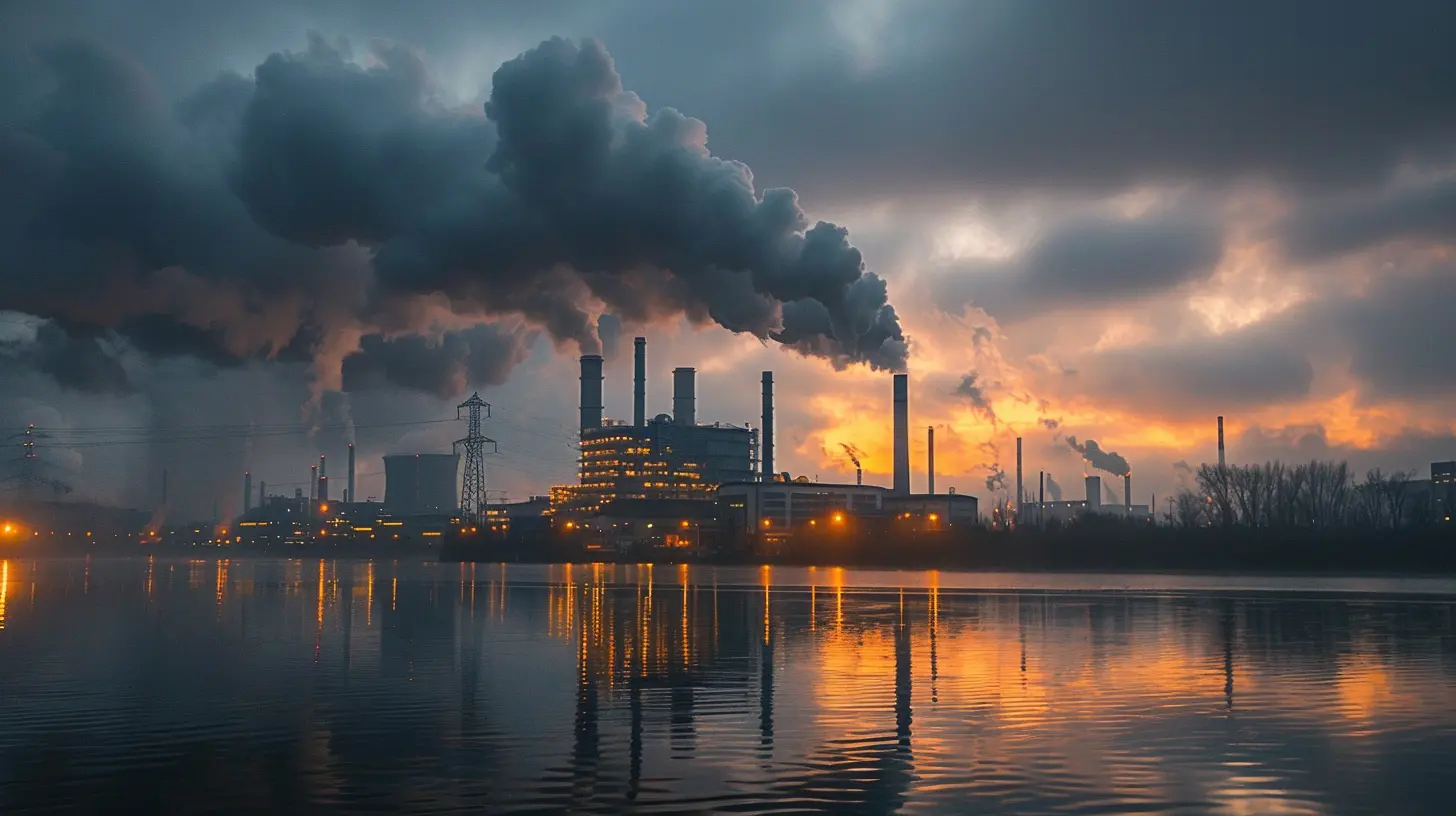The Role of Big Data in Climate Change Research
1 October 2025
Let’s be honest — climate change is no longer just a buzzword whispered in science documentaries or printed in bold on protest signs. Nope, it’s the reality we’re living in. Melting glaciers, raging wildfires, oceans doing a not-so-elegant dance of rising tides — we’re not just watching the weather anymore; we’re trying to predict a chaotic global system using every tool we can get our hands on.
And guess what? One of our most powerful tools isn’t some secret government satellite (though those are cool). It’s big data. Yes, the same kind of massive data piles that help Netflix recommend your next binge show or let Amazon know you might be into slippers shaped like dinosaurs.
Today, we're diving deep (like deep-sea-deep) into how big data is becoming the ultimate MVP in the fight against climate change.
Buckle Up: What Even Is Big Data?
Alright, before we go Sherlock Holmes on climate stuff, let’s get our definitions straight.Big data basically means lots and lots (and lots) of information — like oceans-full. But it’s not just about the size. It also checks boxes like:
- Variety: Data from satellites, sensors, social media, weather stations… literally everywhere.
- Velocity: It comes in fast, like “blink and you missed it” fast.
- Volume: We’re talking terabytes, petabytes, exabytes — more than your phone could ever handle.
- Veracity: Accuracy matters. Garbage in = garbage out, right?
When you combine all that, you get the kind of data that can change the world. Literally.
Climate Change: A Problem You Can’t Solve with a Thermometer
If you’ve ever Googled “is it supposed to be this hot in October?”, you already know climate change doesn’t play by the usual rules. It isn’t about one snowy day or a particularly sweaty summer. It’s long-term. It’s global. And it’s messy.That’s why researchers can’t rely on just one type of data. They need patterns, trends, anomalies — and they can’t wait 50 years to draw a pie chart. Enter big data.
How Big Data Is Taking Climate Research to a Whole New Level
Here’s the million-dollar question: How exactly is big data helping scientists understand and fight climate change?Let’s break this down with a few mind-blowing areas.
1. Satellite Imagery: Eyes in the Sky
Imagine Google Earth, but on steroids. Satellites orbiting Earth are snapping high-res images, collecting radiation levels, mapping ice thickness, monitoring forest health — you name it.These satellite data streams are massive. Like, daily dumps of raw information measuring changes in Earth’s surface temperature, CO₂ levels, sea levels, and even soil moisture. You couldn’t analyze this stuff with your average Excel spreadsheet.
Machine learning steps in like a nerdy wizard, churning through the data and pointing out trends: How much have the glaciers retreated? Where are forests thinning out? When did that giant coral reef start bleaching?
Without these space eyes, we’d be flying blind.
2. Predictive Models: Climate’s Crystal Ball
Think of big data as the ingredients for a giant weather-predicting soup. Scientists combine current climate data, historical records, geological information, and even socioeconomic stats to build predictive models.These models let us simulate future scenarios — like “What happens if the global temperature rises 2°C?” or “How would rain patterns change in South America if deforestation continues?”
The more data we feed these models, the smarter they get — kind of like how your Spotify playlist starts getting weirdly accurate.
3. Real-Time Monitoring with IoT Sensors
IoT (Internet of Things) sensors aren’t just for turning your lights on from the couch. They’re quietly scattered across the planet in oceans, forests, and even buried in snowpacks.These tiny tech guardians collect meteorological data like temperature, humidity, CO₂ concentration, and more — in real-time. And when synced with big data platforms, they become part of a global pulse-check. They help scientists detect alarming changes as they’re happening, not six months later when it’s too late.
4. Agriculture & Food Security
Here’s where things get personal. Big data helps us understand how climate change affects crops, soil health, and food supply.By analyzing satellite data, weather patterns, and soil sensors, researchers can predict droughts, identify at-risk crops, and help farmers plan better. Some countries are even using AI-backed big data tools to develop climate-resilient crops. (Yes, super-seeds are a thing now.)
5. Disaster Management
Wildfires, floods, hurricanes — Mother Nature is in full drama mode lately.Big data helps us manage and even anticipate natural disasters. Governments and climate scientists use predictive analytics to send early warnings, make evacuation plans, and distribute resources faster after a disaster strikes.
Remember that 2020 Australian bushfire season? Big data played a massive role in mapping fire spread and protecting communities. It truly saves lives.
Big Data Isn’t Perfect (But It’s Definitely Powerful)
Okay, let’s pump the brakes a bit. Big data isn’t some magic button you smash to save the planet. There are bumps in the road:- Too Much Data: More is not always better if it’s chaotic. Organizing and interpreting huge datasets is tricky.
- Biases: If all your sensors are in cities and not rural areas, guess what? You’ll miss huge climate phenomena.
- Privacy Concerns: Some data comes from people — and not everyone wants their phone tracking CO₂ emissions.
- Infrastructure: Low-income countries often don’t have the tech to collect and process big data. Climate research then becomes super skewed.
But trade-offs aside, the pros outweigh the cons by a landslide.
Quirky Case Studies You Didn’t Know Were Powered by Big Data
Let’s sprinkle in some real-world magic:Case #1: Penguins & AI
Researchers used drones and high-res satellite imagery backed by big data algorithms to track penguin colonies in Antarctica. Yup, waddling, tuxedo-wearing climate indicators. Penguin poop (technically called guano, if you want to be fancy) is visible from space and helps scientists map melting ice and population changes.Case #2: Trees Talking to Satellites
In the Amazon rainforest, big data and LiDAR (a radar cousin that uses lasers) are used to monitor illegal deforestation. Trees may not scream when they fall, but satellites know when they’ve gone missing.Case #3: Google Earth Engine vs. Climate Change
Google Earth Engine, combining petabytes of Earth data with cloud computing, is used by scientists worldwide to analyze climate trends. From drought modeling to carbon storage mapping, it’s like Google Maps had a climate-conscious sibling.The Future: AI + Big Data + Climate Action
Want to really geek out? Let’s talk AI.Artificial intelligence teams up with big data to become climate science’s new BFF. AI algorithms scan through dumb amounts of data — stuff that'd take humans literal centuries to interpret — and find insights faster than your brain finds the snooze button.
We're talking:
- Machine-learning models that predict Arctic melt rates
- Neural networks that generate wildfire-risk heat maps
- AI bots that simulate thousands of climate scenarios in seconds
It’s like putting a climate scientist brain inside a supercomputer — and then giving it rocket fuel.
What Can You Do About It?
You don’t need to be a data scientist to play your part.- Support open data initiatives — more data = better models.
- Push for climate policies that use real science (aka, big data-backed).
- Be smart about your digital footprint — sustainability and tech go hand in hand.
- And hey, if you’re in tech? Maybe you’re the next person to build a genius climate-data app.
Final Thoughts: Big Problems Need Bigger Data
Climate change is the boss level of global challenges — complex, sneaky, and getting harder every year. But the arsenal of big data lets us fight smarter, not harder.With every satellite snapshot, sensor reading, or predictive model, we get a clearer picture of what’s happening — and what’s coming next. It’s not just numbers and charts. It’s a giant, interconnected system of insight — helping us, maybe for the first time, be proactive instead of reactive.
Because at the end of the day, the planet isn’t rebootable. But with big data? We just might have a fighting chance to fix what’s broken.
all images in this post were generated using AI tools
Category:
Big DataAuthor:

John Peterson
Discussion
rate this article
1 comments
Velma McGinnis
Insightful article! Big data truly enhances our understanding of climate change dynamics.
October 10, 2025 at 4:00 AM

John Peterson
Thank you for your feedback! I'm glad you found the article insightful. Big data indeed plays a crucial role in unraveling complex climate patterns.


